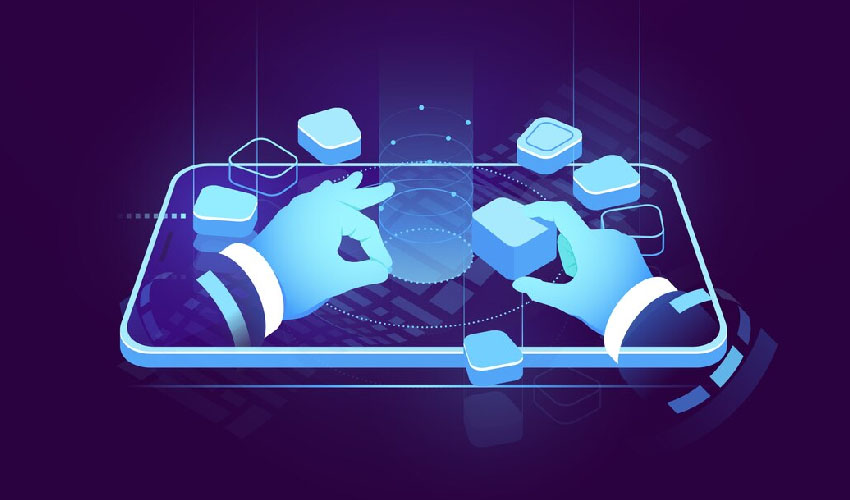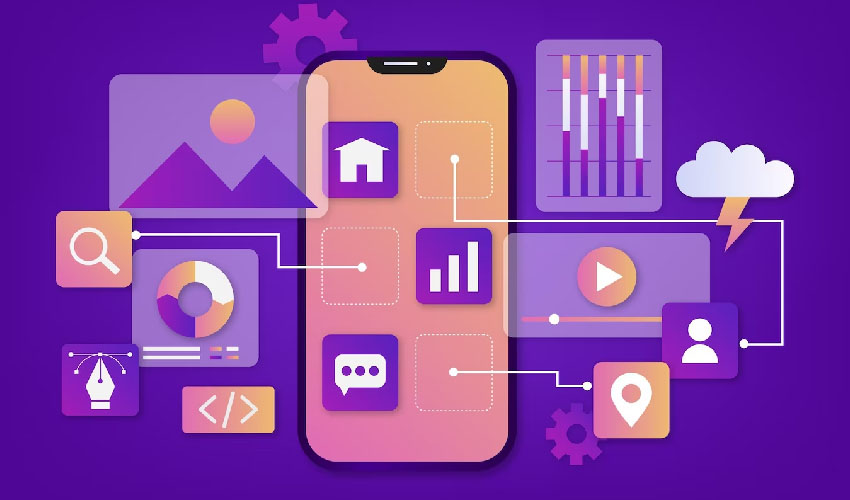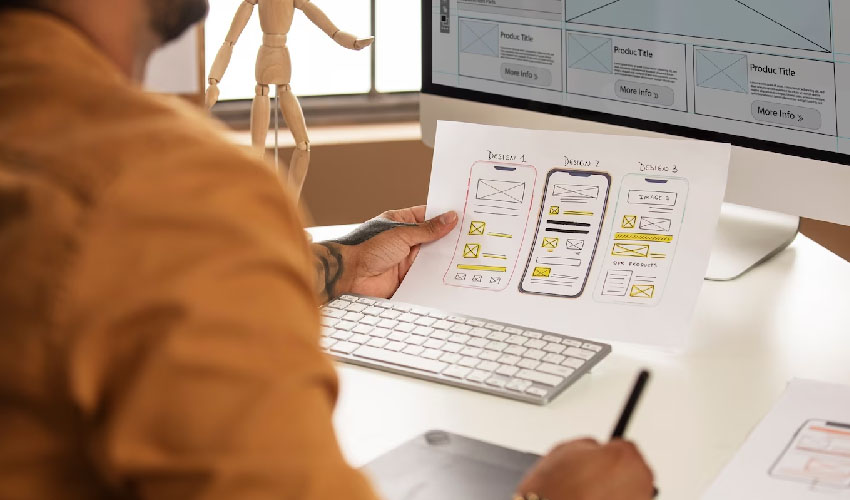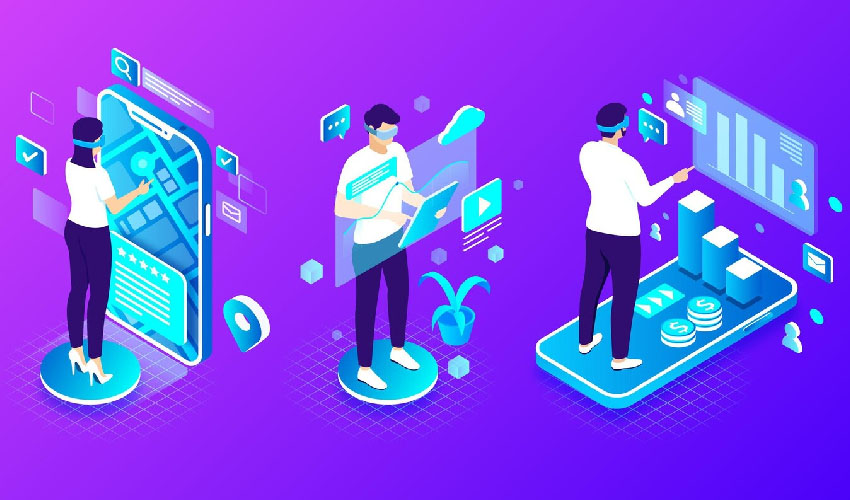Table of Contents
Introduction to Clone App Development
In the dynamic and ever-evolving realm of mobile applications, the concept of Clone App Development has emerged as a distinctive and intriguing trend, reshaping the way developers and entrepreneurs approach the creation of digital solutions. As the demand for innovative and user-friendly applications continues to soar, the Clone App Development phenomenon offers a unique approach that goes beyond mere replication. This comprehensive guide explores the intricacies of Clone App Development, delving into its origins, evolution, benefits, challenges, and the ethical considerations surrounding this innovative approach.
I. The Genesis of Clone App Development:
To understand the current landscape of Clone App Development, it’s essential to trace its roots back to the early days of mobile app proliferation. The app ecosystem witnessed exponential growth, with groundbreaking applications like Uber, Instagram, and Airbnb setting new standards for user experience and functionality. As these apps achieved unprecedented success, developers and entrepreneurs began to recognize the potential inherent in replicating the winning formula.
The cloning process, however, is not about copy-pasting code; it involves a meticulous study of the target application’s features, user interface, and overall user experience. Developers aim to understand the underlying mechanisms that contribute to the success of a particular app, using this knowledge as a foundation for creating a similar yet distinct product.
II. The Dynamics of Clone App Development:
a. Types of Clone Apps: Clone apps come in various forms, each serving a specific purpose within the digital ecosystem. Some clones replicate the entire functionality of an app, providing an almost identical user experience. Others focus on specific features, extracting and enhancing certain elements to create a unique value proposition. Social media, on-demand services, and e-commerce platforms are among the most popular categories for clone app development.
b. Inspiration vs. Imitation: Clone App Development is not synonymous with imitation. While the core idea or concept may be replicated, developers often strive to bring innovation and customization to the table. This involves improving upon existing features, addressing pain points, and incorporating unique elements that set the cloned app apart from its inspiration. The goal is not just to copy but to enhance and tailor the user experience for a specific audience or niche.
III. The Advantages of Clone App Development:
a. Time and Cost Efficiency: One of the primary advantages of Clone App Development is the significant reduction in both time and costs. Developing an application from scratch can be a time-consuming and resource-intensive process. Clone app developers leverage existing frameworks, design patterns, and proven concepts, streamlining the development cycle and minimizing financial investments.
b. Proven Success: Cloning successful apps means tapping into a proven concept that has already gained acceptance in the market. This inherent success factor reduces the risk associated with introducing entirely new and untested ideas. Entrepreneurs can capitalize on consumer preferences and behaviors that have been validated by the success of the original app.
c. Customization and Innovation: While the foundation of a cloned app may be inspired by an existing model, developers have the creative freedom to introduce customizations and innovations. This can include enhancing features, improving user interfaces, or integrating new functionalities that cater to the specific needs of the target audience. The aim is to offer a familiar yet unique user experience.
d. Targeting Niche Markets: Clone app development allows for the creation of niche-specific applications. Developers can identify gaps or unmet needs in the market and tailor their cloned app to address those specific requirements. This targeted approach increases the likelihood of success within a particular demographic or industry segment.
e. Faster Time to Market: In the fast-paced world of technology, time to market is a critical factor. Clone app development significantly shortens the development cycle compared to creating an entirely new application. This agility allows developers to capitalize on emerging trends and consumer preferences, gaining a competitive edge in the market.
Key Concepts in Clone App Development
Clone App Development has become a significant trend in the ever-evolving world of mobile applications, offering developers and entrepreneurs a unique set of advantages. In this comprehensive exploration, we delve into the key concepts that define and drive the practice of Clone App Development.
1. Understanding the Clone App Development Landscape
1.1 Definition and Scope: Clone App Development involves the creation of applications that replicate the core features and functionalities of existing successful apps. This is not synonymous with copying code; instead, it revolves around recreating a similar user experience with potential improvements or customizations.
1.2 Types of Clone Apps
- Exact Clones: These apps closely mimic the original, replicating features, design, and functionalities almost identically.
- Partial Clones: Developers may choose to replicate only specific features of an app while introducing variations or innovations in other areas.
- Customized Clones: This approach involves maintaining the fundamental concept of an app while introducing unique features or design elements for differentiation.
2. Benefits of Clone App Development
2.1 Time and Cost Efficiency: Developing an application from scratch is a resource-intensive process. Clone app development significantly reduces both development time and costs by leveraging existing frameworks and design patterns.
2.2 Proven Concept: Cloning successful apps means tapping into a proven concept that has already gained traction in the market. This reduces the risk associated with introducing a completely new and untested idea.
2.3 Customization and Innovation: While the core functionality may be similar, clone apps often incorporate customizations and innovations. Developers have the flexibility to enhance features, improve user interfaces, or introduce unique elements, setting their applications apart.
2.4 Targeting Niche Markets: Clone app development allows for the creation of niche-specific applications. Developers can identify gaps in the market and tailor their cloned app to address specific requirements, catering to a more targeted audience.
2.5 Faster Time to Market: The development cycle of a clone app is generally shorter than creating an entirely new application. This faster time to market is crucial, especially in industries where trends and user preferences change rapidly.
3. Challenges and Considerations in Clone App Development
3.1 Legal and Ethical Considerations: Developers must ensure that their cloned apps comply with copyright laws and intellectual property rights. A careful review of legal implications is essential to avoid legal disputes.
3.2 Differentiation and Innovation: To be successful, clone apps must go beyond replication. Continuous innovation and differentiation are crucial to avoid being perceived as mere imitations of the original.
3.3 User Perception:
Developers need to be mindful of how users perceive cloned apps. Transparency about the inspiration behind the app and clear communication about added value is essential.
3.4 Security Concerns: Security is a critical consideration in clone app development. Developers must ensure that the cloned app is secure and does not compromise user data.
4. Technological Aspects of Clone App Development
4.1 Frameworks and Technologies: Choosing the right frameworks and technologies is crucial for the success of a clone app. Developers often leverage cross-platform development tools to ensure compatibility across different devices and operating systems.
4.2 API Integration: Clone apps may need to integrate with various APIs to replicate functionalities. Ensuring seamless integration is vital for a smooth user experience.
4.3 Scalability: Developers must design clone apps with scalability in mind. As user bases grow, the app should be able to handle increased traffic and demand.
User Experience (UX) Design in Clone App Development
User Experience (UX) design is a pivotal aspect of clone app development, contributing significantly to the success and user adoption of the application. In the realm of creating replicas of existing successful apps, the challenge lies not only in mirroring functionalities but also in enhancing and optimizing the overall user experience. This comprehensive guide delves into the intricacies of UX design in clone app development, exploring key principles, best practices, and the impact of an intuitive user journey on the success of cloned applications.
Understanding UX Design in the Context of Clone Apps
UX design encompasses the process of creating products that provide meaningful and relevant experiences to users. In the context of clone apps, the goal is to not only replicate the functionalities of a successful app but to ensure that users engage seamlessly with the new application, enjoying a positive and satisfying experience.
1. Emphasizing User-Centric Design: A user-centric approach is fundamental to effective UX design. Understanding the needs, preferences, and behaviors of the target audience is crucial. In the context of clone app development, this involves analyzing the user base of the original app and tailoring the design to meet the expectations of the intended audience.
2. Consistency with Familiarity: While introducing innovative features is essential, maintaining a level of consistency with the original app fosters a sense of familiarity. Users should find the transition from the established app to the clone app seamless, recognizing common elements such as icons, navigation patterns, and overall aesthetics.
3. Intuitive Navigation: The navigation structure plays a pivotal role in user engagement. Clone apps should mirror the navigation flow of the original app, ensuring that users can easily find and access the features they are accustomed to. Clear and intuitive navigation enhances the overall user experience.
Key Principles of UX Design in Clone App Development
1. Empathizing with Users: Understanding the end-users’ needs, pain points, and motivations is the foundation of effective UX design. Conduct user research to gain insights into the preferences and behaviors of the target audience. This empathy-driven approach allows designers to create experiences that resonate with users.
2. Usability and Accessibility: Usability is at the core of a positive user experience. Clone apps should prioritize ease of use, ensuring that users can accomplish tasks efficiently and without confusion. Additionally, accessibility considerations, such as accommodating users with disabilities, contribute to a more inclusive and user-friendly experience.
3. Visual Hierarchy and Information Architecture: Designing a clear visual hierarchy helps users prioritize information and navigate the app effortlessly. Information architecture involves organizing and structuring content in a logical and intuitive manner. This is particularly crucial in clone apps, where users have expectations based on their familiarity with the original app’s layout.
4. Responsive Design: Given the diverse range of devices and screen sizes, clone apps must employ responsive design principles. Ensuring that the app adapts seamlessly to various screen sizes enhances the user experience and broadens the app’s accessibility.
5. Feedback and Iteration: Continuous feedback loops and iterative design processes are essential for refining the user experience. Monitor user interactions, gather feedback, and iterate on the design to address any usability issues or areas for improvement. This cyclical approach contributes to the ongoing enhancement of the app’s UX.
Best Practices in UX Design for Clone Apps
1. Customization Without Complication: While customization is a key aspect of clone app development, it should not result in a complicated user interface. Balance is crucial – provide customization options, but ensure they are presented in a user-friendly manner, avoiding overwhelming the user with choices.
2. Onboarding for Familiarity: The onboarding process is an opportunity to guide users through the app’s features and functionalities. In clone app development, onboarding should strike a balance between introducing unique elements and reinforcing familiarity with the original app.
3. Performance Optimization: Performance issues can significantly impact the user experience. Clone apps must be optimized for speed and responsiveness. Long loading times or laggy interactions can lead to user frustration and abandonment.
4. Seamless Integration of New Features: Introducing new features is an opportunity to enhance the clone app’s value proposition. However, these additions should seamlessly integrate with the existing user interface and not disrupt the overall flow. Consistency remains key.
5. User Feedback Mechanisms: Providing channels for user feedback is essential in clone app development. This not only allows users to express their opinions but also provides valuable insights for further improvements. Actively seek and respond to user feedback to demonstrate a commitment to enhancing the user experience.
The Impact of UX Design on User Retention and Acquisition
1. User Retention: A positive and intuitive user experience is a significant factor in user retention. If users find the clone app easy to navigate and enjoyable to use, they are more likely to continue engaging with the application over time. This is particularly crucial in a competitive landscape where user loyalty is highly sought after.
2. User Acquisition: The success of a clone app is not only measured by its ability to retain existing users but also by its capacity to attract new ones. An exceptional user experience contributes to positive word-of-mouth, app store ratings, and reviews, all of which play a vital role in attracting a broader user base.
3. Building Trust and Credibility: Trust is a foundational element of user engagement. A well-designed clone app that delivers on user expectations fosters trust and credibility. Users are more likely to embrace a clone app that provides a reliable and enjoyable experience, backed by thoughtful UX design.
Challenges and Considerations in UX Design for Clone Apps
1. Avoiding Over-Replication: While replicating successful features is a key objective, over-replication can lead to a lack of innovation. UX designers must strike a balance between familiarity and introducing elements that add unique value to the clone app.
2. Legal and Ethical Considerations: UX designers working on clone apps must be mindful of legal and ethical considerations. Ensuring compliance with intellectual property laws and respecting the original app’s design choices is paramount to avoiding legal complications.
3. User Education: Users transitioning from the original app to the clone app may require some education on new features or customization options. Implementing effective onboarding processes and providing user-friendly guides can mitigate potential confusion.
Future Trends in Clone App Development
As the digital landscape continues to evolve at an unprecedented pace, clone app development stands at the forefront of innovation. The concept of replicating successful applications and adapting them to specific niches or adding unique features has proven to be a powerful strategy. Looking ahead, several trends are poised to shape the future of clone app development, enhancing user experiences, and opening new avenues for businesses. In this in-depth exploration, we delve into the exciting future trends that will define the next frontier of clone app development.
1. AI and Machine Learning Integration:
The integration of Artificial Intelligence (AI) and Machine Learning (ML) is set to revolutionize clone app development. Future clone apps will leverage these technologies to provide more personalized and intuitive user experiences. From predictive analytics to chatbots offering real-time assistance, AI and ML will be integral in enhancing app functionality and user engagement.
2. Blockchain for Security and Transparency:
Security and transparency are paramount concerns in the digital age. Blockchain technology, known for its decentralized and secure nature, is expected to play a crucial role in future clone app development. Implementing blockchain can enhance data security, prevent unauthorized access, and provide users with a transparent and trustworthy platform.
3. Cross-Platform Compatibility:
With users accessing applications across various devices and platforms, the demand for cross-platform compatibility will continue to rise. Future clone apps will be developed with a focus on seamless integration across different operating systems, ensuring a consistent user experience regardless of the device.
4. Augmented Reality (AR) and Virtual Reality (VR) Integration:
The incorporation of Augmented Reality (AR) and Virtual Reality (VR) technologies will add a new dimension to clone app development. Industries such as gaming, education, and e-commerce are expected to benefit from immersive experiences that AR and VR can offer. Clone apps will likely integrate these technologies to provide users with innovative and interactive features.
5. Voice Recognition and Natural Language Processing:
The rise of voice-activated devices has led to a growing demand for voice recognition and natural language processing in mobile applications. Future clone apps will integrate these technologies to enable hands-free interaction, making the user experience more convenient and accessible.
6. 5G Technology for Enhanced Connectivity:
The widespread adoption of 5G technology will have a profound impact on clone app development. With faster data speeds and lower latency, clone apps can deliver richer content, improved real-time communication, and a more responsive user interface. This advancement will be particularly significant for applications that rely on quick data transfer and high-quality multimedia.
7. Personalized User Experiences:
Personalization will continue to be a key focus in future clone app development. By leveraging user data, behavioral patterns, and preferences, developers will create highly customized experiences. From tailored content recommendations to personalized interfaces, clone apps will strive to make each user feel like the app was specifically designed for them.
8. IoT Integration for Smart Functionality:
The Internet of Things (IoT) is gradually becoming an integral part of daily life, connecting various devices and systems. Future clone apps will likely integrate with IoT devices, offering users greater control over smart home appliances, wearables, and other connected gadgets. This interconnected ecosystem will provide a more holistic user experience.
9. Sustainability and Green Tech Initiatives:
As environmental concerns become more prominent, future clone app development may see a surge in sustainability and green tech initiatives. Developers will focus on creating applications that are energy-efficient, minimizing their carbon footprint. This trend aligns with the growing emphasis on corporate social responsibility and sustainable practices.
Security Measures in Clone App Development
In the dynamic landscape of mobile applications, clone app development has become a prevalent strategy for businesses aiming to capitalize on the success of established applications. However, with the increasing frequency of cyber threats and data breaches, security in clone app development is a paramount concern.
1. Understanding the Security Landscape
a. Risk Assessment: Before embarking on the development journey, conducting a thorough risk assessment is crucial. Identify potential vulnerabilities and assess the level of risk associated with various components of the clone app, including data storage, communication channels, and user authentication.
b. Data Encryption: Implement robust encryption mechanisms to secure data both in transit and at rest. Utilize industry-standard encryption algorithms to protect sensitive user information, preventing unauthorized access and data breaches.
2. Legal and Compliance Considerations
a. Intellectual Property Rights: Respecting intellectual property rights is not only an ethical consideration but also a legal necessity. Ensure that the clone app development process adheres to copyright laws and does not infringe on trademarks or patents.
b. User Data Protection: Comply with data protection regulations such as GDPR, CCPA, or other relevant laws depending on the target audience. Clearly communicate the app’s privacy policy to users and obtain explicit consent for data collection and processing.
3. Authentication and Authorization
a. Secure User Authentication: Implement strong authentication mechanisms, such as two-factor authentication (2FA) or biometric authentication, to enhance the security of user accounts. Avoid using default credentials and encourage users to create strong, unique passwords.
b. Authorization Controls: Define and enforce strict authorization controls to ensure that users only have access to the functionalities and data relevant to their roles. Regularly audit and update authorization policies to adapt to changing security requirements.
4. Code Security
a. Secure Coding Practices: Adhere to secure coding practices throughout the development lifecycle. Regularly conduct code reviews and static analysis to identify and rectify potential security vulnerabilities. Use secure coding frameworks and libraries.
b. Regular Security Audits: Periodically conduct comprehensive security audits of the clone app’s codebase. Engage third-party security experts to perform penetration testing and vulnerability assessments to identify and address potential weaknesses.
5. Network Security
a. Secure Communication Channels: Ensure secure communication between the app and external servers by using protocols such as HTTPS. Implement SSL/TLS certificates to encrypt data during transmission, preventing eavesdropping and man-in-the-middle attacks.
b. Firewall Protection: Deploy firewalls to monitor and control incoming and outgoing network traffic. Configure firewalls to allow only authorized connections and block potential threats, providing an additional layer of defense against malicious activities.
Conclusion:
The future of clone app development holds exciting possibilities, driven by technological advancements and evolving user expectations. As developers embrace AI, blockchain, AR, VR, and other cutting-edge technologies, clone apps will continue to evolve, offering users more sophisticated and tailored experiences.
Thanks for reading our post “Clone App Development”. Please connect with us to learn more about Clone App.






















